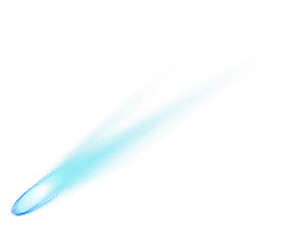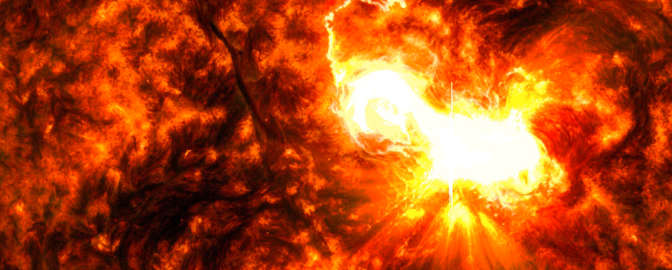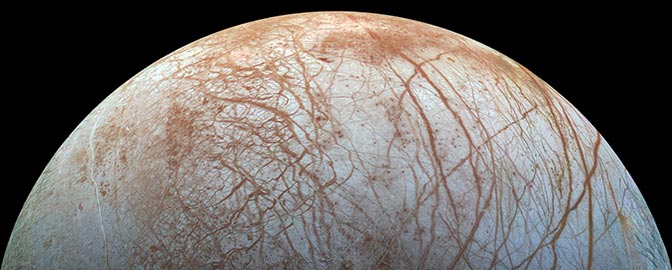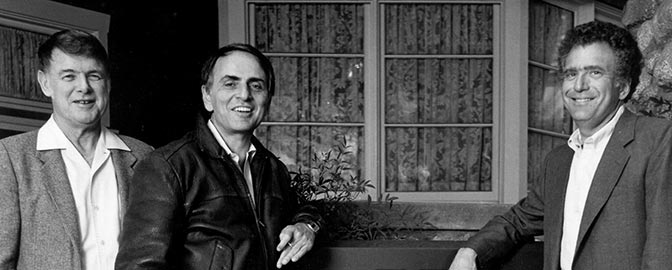The Downlink • Aug 15, 2025
All space rocks great and small
Space Snapshot

Astronomers recently used the Hubble Space Telescope to take the sharpest-ever image of the interstellar comet 3I/ATLAS (pictured) when it was 446 million kilometers (277 million miles) from Earth. These observations helped narrow estimates of the size of the comet’s nucleus, which could be as large as 5.6 kilometers (3.5 miles) in diameter. Image credit: NASA/ESA/David Jewitt/Joseph DePasquale.
Fact Worth Sharing

Interstellar comet 3I/ATLAS is the fastest object ever recorded in our Solar System. It is moving at 209,000 kilometers (130,000 miles) per hour, likely sped up by gravitational slingshots from stars and nebulae over the billions of years it has been drifting through interstellar space.
Mission Briefings


A meteorite older than Earth flew through a roof last month. On July 27, a meteorite survived its trip through the atmosphere and smashed through the roof of a house in McDonough, Georgia, and shattered the floor just a few feet from the home’s resident. New analysis of a fragment of the meteorite (pictured) suggests that it likely formed around 4.56 billion years ago. Image credit: University of Georgia.

JWST may have found a planet orbiting Alpha Centauri A. Part of the Alpha Centauri triple star system four light-years away, this is the closest Sun-like star to our Solar System. Three confirmed planets had previously been found orbiting the red dwarf Proxima Centauri, but JWST’s detection of a gas giant is the first for the brighter Alpha Centauri A.

China’s crewed lunar lander passed a key test. The "Lanyue" two-person lunar lander succeeded at a comprehensive landing and takeoff test on Aug. 6. China's first human lunar exploration mission is expected to be carried out before 2030.

The Sun may be less active than other stars because of its planets. Our Sun is about five times less magnetically active than other Sun-like stars, perhaps due to the influence of the planets. New research suggests that the combined tidal forces of the planets could “nudge” the Sun's inner magnetic drive, curbing solar activity.

Apollo astronaut Jim Lovell has died. Lovell flew on several important crewed missions, including Gemini 7 and Gemini 12. He served as Command Module Pilot for Apollo 8, the first mission to lift off on a Saturn V rocket and orbit the Moon. Most notably, he was commander of the Apollo 13 mission, helping return the crew safely to Earth after disaster struck. Lovell passed away on Aug. 7 at the age of 97.
From The Planetary Society


Meet the newest class of asteroid hunters. For 28 years, The Planetary Society has been awarding Shoemaker NEO Grants to very advanced amateur astronomers from around the world to support their efforts to find, track, and characterize near-Earth asteroids. This year, we were able to award a record-breaking total of $87,562. Learn more about the winners and the work they do to defend Earth. Pictured: A group of asteroid hunters from the Società Astronomica Schiaparelli OdV in Italy with their telescope in Namibia. Image credit: Luca Buzzi.

Shoemaker NEO Grants only happen with the support of people like you. When you make a gift of any amount, you directly contribute funding to expert asteroid hunters who are advancing the search for potentially dangerous near-Earth objects. Give today to help defend our planet from impacts — plus, right now, your gift will be matched up to $25,000 thanks to a generous Society member!

The Planetary Society is hiring! Based at our headquarters in Pasadena, California, the Systems Assistant role will support the organization's day-to-day IT operations. See the job posting for more information and application instructions.

Could the future of space exploration be influenced by Star Trek? This week’s Planetary Radio brings you to the STLV Star Trek convention, where actors Robert Picardo and Tim Russ join Planetary Society staff members Ambre Trujillo and Andrew Pauly to explore how Star Trek has inspired real-world space advocacy.
What's Up

This week, look for reddish Mars west in the evening sky. In the predawn, look for super bright Venus in the east, with very bright Jupiter nearby. Mercury is low in the east before sunrise, reaching its highest point above the horizon on Aug. 19. The Moon will cozy up to several planets this week, appearing near Jupiter on Aug. 19, Venus on Aug. 20, and then Mercury on Aug. 21. Learn more in our guide to August’s night skies.
Join now and save space missions

If you are not already a member, become one TODAY and help shape the future of space science and exploration by fueling mission-critical advocacy efforts. Our fight for space science is only possible because of the support of our members.
Will you join us and help save more missions?
Wow of the Week

A new study has provided some context to help understand the probability and risk of asteroid impacts. The researchers conducted a simulation to determine the likelihood of near-Earth objects with diameters greater than 140 meters (460 feet) hitting Earth over the course of 150 years, and the likelihood of such an impact killing a person. They then compared this to the known probabilities of other rare but preventable deaths, including a lightning strike, a car crash, an elephant attack, and influenza. Some of their results are laid out in the above chart. Image credit: arXiv.
Send us your artwork!
We love to feature space artwork in the Downlink. If you create any kind of space-related art, we invite you to send it to us by replying to any Downlink email or writing to [email protected]. Please let us know in your email if you’re a Planetary Society member!


 Explore Worlds
Explore Worlds Find Life
Find Life Defend Earth
Defend Earth

